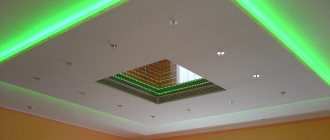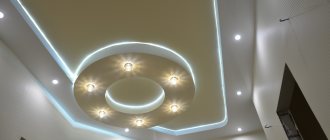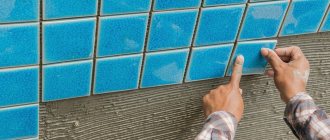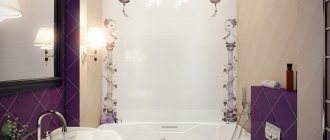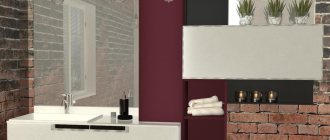Preparation
If you decide to hide the socket in the wall, then you need to install a socket box in it. To do this you will need a hammer drill and a special crown. With their help, a corresponding hole is hollowed out in the wall, then it is cleaned of debris and dust. After this, the socket itself is installed and secured with alabaster. If an overhead system is being installed, then the box must be disassembled, the module removed from it, and the socket box attached to the wall (or floor) with screws.
In some cases, grounded computer outlets are required. If the grounding cord is not installed separately, you need to purchase a rj-45 socket model already with grounding (they are somewhat more expensive, but this is computer safety).
Installation
The difference between a computer socket and all others is the use of 8 copper wires, twisted in pairs. These 4 pairs are called twisted pairs, and installation consists of connecting them correctly. First, the terminal block needs to be disconnected from the main mechanism. This is done by carefully turning the white lock clockwise. Now you need to run the cable through the back.
Installation of walk-through sockets, like regular sockets, is carried out according to one of two schemes: T568B or T568A. Today, network devices themselves can recognize the scheme and even adjust if necessary, but more often they use scheme B, in which the operation of the port is ensured by a green and orange pair of contacts. The cross-connection diagram is usually present on the terminal block body; according to this diagram, you need to connect the twisted pairs. In order not to confuse anything, you need to look at the color markings very carefully. The grooves of the cover correspond to the twisted pair wires in color: white-brown corresponds to brown, white-blue corresponds to blue, and so on.
It is necessary to very carefully remove the insulation from the cable (no more than 3 cm), unravel the wires (no more than 1.5 cm) and strip them. Now it’s time to insert the twisted pair wires into the grooves of the cover in accordance with their color markings. If you use a legrand rj-45 socket (preferably with grounding), then you will not have to strip the ends of the wires. It has such a convenient design that the wires can be inserted tightly into the corresponding grooves, and the contact pads themselves will secure them when the cover is lowered. The fact is that each pad is a pointed plate; when the lid is lowered, the plate cuts through the insulation of the conductors just enough that they touch the signal-conducting cores of the conductors.
The connection of one socket has been completed; now the terminal block needs to be returned to its place at the back of the socket and the latch must be closed. To do this, the latch is turned counterclockwise. It would be good to check if everything works. If you don't have a cable tester, you'll have to connect something, like a modem, and make sure it works. If the modem does not turn on, you will have to check once again whether the wires are installed correctly and connected according to the diagram.
Now you need to do the same thing to connect the wires to the second outlet. Once you are sure that both outlets are working, you can close them. If both wires are correctly and conveniently placed in the box, you can close the socket, completely hiding the socket box, and install a decorative frame. The external socket just needs to be fixed to the surface, the main thing is that the socket box is installed firmly. This will ensure that the entire device remains stationary during operation. The interior remains to be hidden using wallpaper, panels or special decor. The double rj-45 socket is installed and ready for use, the main thing is not to forget about grounding, since safety depends on it. In addition, some companies refuse to accept equipment for warranty repair if it was operated without grounding.
In many families, several devices are connected to the Internet: we can’t imagine life without the World Wide Web, so everyone needs their own line. They work mainly using a wireless protocol - Wi-Fi, but there is still a wire, since wired Internet is still more stable than wireless. During repairs, all wires are hidden in the walls and “Internet” wires are no exception. They, like electric ones, are plugged into sockets, only of a different standard: they are called computer or information. They can have different connectors, but the most common is RJ 45. You can do the installation and connection yourself, but since the connector looks unusual in appearance, there are more than two or three wires in it, and the connection is not ensured by soldering or twisting, you need to know , how to connect an Internet outlet and also the connector that should be inserted into it.
RJ-45 connector crimping
The Internet cable entering an apartment or house, most often called twisted pair, often ends in a small plastic connector. This plastic device is a connector, usually RJ45. In professional jargon they are also called “Jack”.
Its body is transparent, so wires of different colors are visible. The same devices are used on connecting wires that connect computers to each other or to a modem. Only the order of arrangement (or, as computer scientists say, pinout) of the wires can differ. The same connector is inserted into a computer socket. If you understand how the wires are distributed in the connector, there will be no problems connecting the Internet outlet.
Internet cable connection diagram by color
There are two connection schemes: T568A and T568B. The first option - “A” is practically not used in our country, and everywhere the wires are arranged according to the “B” scheme. It is necessary to remember it, since it is what is required in most cases.
To finally clarify all the issues, let's talk about the number of wires in a twisted pair. This Internet cable comes in 2-pair and 4-pair versions. To transfer data at speeds up to 1 Gb/s, 2-pair cables are used, from 1 to 10 Gb/s - 4-pair. Today, apartments and private houses are mostly supplied with flows of up to 100 Mb/s. But with the current pace of development of Internet technology, it is quite possible that in just a couple of years the speeds will be measured in Megabits. It is for this reason that it is better to immediately expand a network of eight rather than 4 conductors. Then when changing speed you won't have to redo anything. The equipment will simply use more conductors. The difference in cable price is small, and sockets and connectors for the Internet still use eight-pin ones.
If the network is already wired in two pairs, use the same connectors, only after the first three conductors laid according to scheme B, skip two contacts and place the green conductor in place of the sixth (see photo).
Crimping a twisted pair cable into a connector
There are special pliers for crimping wires in the connector. They cost about $6-10 depending on the manufacturer. They are more convenient to work with, although you can get by with a regular screwdriver and wire cutters.
First, the insulation is removed from the twisted pair. It is removed at a distance of 7-8 cm from the end of the cable. Underneath there are four pairs of conductors of different colors, twisted in twos. Sometimes there is also a thin shielding wire; we just bend it to the side - we don’t need it. We untwist the pairs, align the wires, spreading them in different directions. Then fold according to pattern “B”.
The procedure for sealing the RJ-45 connector in the connector
We clamp the wires in the required order between the thumb and forefinger. We lay out the wires evenly, tightly to each other. Having aligned everything, we take wire cutters and cut off the excess length of the wires laid out in order: 10-12 mm should remain. If you attach the connector as in the photo, the insulation of the twisted pair should begin above the latch.
We insert the twisted pair with the cut wires into the connector. Please note that you need to take it with the latch (protrusion on the lid) down.
Each conductor must get into a special path. Insert the wires all the way - they should reach the edge of the connector. Holding the cable at the edge of the connector, insert it into the pliers. The handles of the pliers are brought together smoothly. If the body has become normal, no special effort is required. If you feel that it “doesn’t work”, double-check whether the RJ45 is installed correctly in the socket. If everything is fine, try again.
When pressed, the protrusions present in the pliers will move the conductors to the microknives, which will cut through the protective sheath and ensure contact.
This connection is reliable and problems rarely arise with it. And if something happens, it’s easy to re-terminate the cable: cut it off and repeat the process with another “jack”.
Video tutorial: crimping an RJ-45 connector with pliers and a screwdriver
The procedure is simple and easy to repeat. Perhaps it will be easier for you to do everything after the video. It shows how to work with pliers, as well as how to do without them, and do everything with a regular straight screwdriver.
Extending twisted pair cables
Twisting cannot be called the best solution for extending wires. In this case, the connection speed is often lost, and the network may stop working altogether. The main requirement is to confidently use a knife and electrical tape if the work is carried out independently by the owners of the equipment. This build-up can last as long as the cables themselves if the work is done correctly.
Often twists are performed at the same level. In this case, each wire is insulated separately. But there is a connection technology that is more reliable. The main idea is to produce elongation at different levels. Then contact between adjacent elements is practically eliminated.
The features of this process are as follows:
- Approximately 10 centimeters of cable are removed from the outer sheath.
- Such cables are usually equipped with special split nylon threads. They are used to clean the shell.
- Do the same procedure with the second piece of cable.
- It is not recommended to completely get rid of the shell. When the connection is ready, the material is reused. This does not affect the splitter itself.
Note! Each twisted pair wire is stripped to about 10 centimeters. The main thing is to ensure that the twists do not touch each other. Stripping wires in any case requires patience and a careful approach.
Important! Care must be taken to ensure that the wires are not cut.
It is better to do the work gradually, moving from one element to another. Only in this case is a stable network signal guaranteed.
The two stripped ends are applied crosswise and twisted with your fingers. It turns out to be a kind of “pigtail” shape. Both wires must twist together, this is the most important thing. You should not allow one wire to be straight and the other to be twisted around it. After the twist is completed, the latter is bent in half. Using pliers, both ends are pressed against each other. Then the mechanical strength of the connection will be maximum.
It is advisable to use a separate insulating tape for each twist. Then tightness and reliability increase. The wires are laid in the sheath of one of the cables, then they are covered with a second similar element. The joint is tightened with insulating tape to make the product look finished. This does not change the separator, as does the basic principle of operation.
How to connect an internet cable to a power outlet
Now we come directly to how to connect the Internet outlet. Let's start with the varieties. Like regular electrical sockets, information sockets come in two modifications:
According to the number of connection points, there are single and double computer sockets.
Although computer sockets differ in appearance, the principle of connecting conductors is the same. There are special contacts equipped with microknives. The protective sheath is cut through the inserted conductor. As a result, the metal of the microknife contacts fits tightly to the metal of the conductor.
How to connect a computer wall socket
Inside each outlet there is a hint on how to place the wires when connecting the Internet cable. Manufacturers stick on the color scheme that we saw when crimping the connector. There are also two options - “A” and “B”, and we also use option “B”.
The case is mounted on the wall, usually with the cable inlet up and the computer connector down. The next steps are simple:
Connecting a twisted pair cable to an outlet is really a simple procedure. Even the first time it will take a few minutes. You can see again what they do and how in the video. It first shows the connection of an Internet cable with 4 wires, then with 8.
How to connect an internal Internet socket
We won’t describe the installation of the plastic box - that’s a different topic. Let's look at the features of connection and assembly. The main problem here is how to disassemble computer sockets. When connecting conductors to them, you need to get to the contact part: a small ceramic or plastic case with built-in microknife contacts. The conductors are connected to this mounting plate, and then the housing is reassembled. And the whole problem is that different manufacturers assemble/disassemble them differently.
For example, from the popular manufacturer of computer sockets Legrand (LeGrand), in order to get to the connectors in the Legrand Valena RJ45 computer socket, you need to remove the front cover. Under it you will find a white plastic impeller (as in the photo), with an arrow on it.
You need to turn the impeller in the direction of the arrow, after which you will have the housing and the contact plate in your hands. It has color-coded conductors. The connection is no different, except that first you need to thread a twisted pair into the hole on the plate, and then separate the wires.
For clarity, watch the video.
Another popular manufacturer of such equipment is Lezard. His system is different. The front panel and metal frame are fixed with small bolts. They are easy to unscrew, but the internal contact plate is held in place by clamps. When assembling and disassembling Lezard computer sockets in the right places, you need to press out the contacts with a screwdriver.
To remove the plastic contact group from the housing, you need to press the latch located on the top. After which you will have a small box in your hands. But that's not all. It is necessary to remove the plastic cover that covers and presses the conductors. Remove it by prying up the side petals with a screwdriver. The plastic is elastic and the effort required is quite decent. Just don't overdo it: it's still plastic. After that, the wiring is standard: according to the markings on the sides (do not forget that we are using diagram “B”).
If you know how to connect an Internet outlet, it’s not difficult to figure out even an unfamiliar model. And now you can upgrade your network yourself (increase the length of the twisted pair, move the computer to another location, make another connection point, etc.), without involving specialists. One more question remains: how to connect double sockets. Two cables are connected to them and then the color scheme is added. This is possible when your network is formed by a modem or two Internet lines are connected. Is it possible to connect both inputs with one cable? It’s possible, but you need to avoid getting confused in the color designation of the wires in the further wiring of the network (remember which color you used instead of which).
Despite the rapid development of wireless communications, RJ-45 outlets are still essential elements of the structured cabling system of a modern building. We suggest considering their structure, types, pinout options and installation methods. The apparent simplicity of the question can be misleading, since there are certain nuances that need to be paid attention to.
How to share an Internet connection between two computers
There may often be situations when you need to use one Internet connection for two computers. For example:
Let's take a look at the steps you need to take to connect to the Internet together.
Windows XP
Select Network Connections in Control Panel and click the Network Connections button.
Windows 7 and Vista
Open Control Panel, type “Network Connections” in the search box in the top right corner and select “View Network Connections.”
The wording “fork the Internet” is too vague; it is impossible to answer it without specifying the protocol and connection diagrams. To route a 10 Mbps Ethernet application from a 4-pair jack to 2 ports, you need. It allows you to separate the original 4 pairs, 2 for each socket. Other brancher layouts can be viewed. In order for Ethernet applications to work at 10 Mbit/s, each port must have 2 pairs occupying pins 1, 2 and 3, 6.
[Question continued] Hello. Due to problems with the walls in the new premises, in some rooms we cannot connect two network cables to two machines, only one to one room. As a way out of the situation, we are considering the Y-adapter YT4-E2-E2 from Siemon. Tell me, do you need any special cables to connect using the adapter? The planned connection diagram is as follows: switch → one network cable → RJ45 female-to-female adapter → Siemon Y-adapter → two network cables for two machines. I read reviews that in some cases in such Y-adapters only one socket per output works. With what it can be connected? Thank you.
There are several errors in the scheme you propose. Firstly, a network switch (“switch”) is called a switch because it switches the signal to individual ports. You cannot “halve” one switch port into two workstations—each must have its own port. This is not a phone that can be parallelized in a pinch.
Secondly, the inclusion of any adapter in the transmission channel degrades its performance. It is no coincidence that in the first part of our answer we pointed out that the Y-splitter allows you to distribute a 10 Mbps Ethernet application - you will not even have a speed of 100 Mbps. Applications will run, but more slowly than they would with a split-less connection, where each workstation is connected to a dedicated, independent segment of the structured cabling system.
Thirdly, the use of any adapters or RJ45 “female-female” (in fact, making a segment from separate sections of cable or even cords) degrades the performance even more. Such a configuration certainly cannot be called SCS.
Fourthly, in any Y-adapters where the circuit differs from 2 pairs with a layout of pins 1, 2 and 3, 6, Ethernet applications will not work. It is these pairs that must supply the signal to the ports of the active equipment - the workstation and the network switch - using the 10BASE-T and 100BASE-T protocols.
The correct configuration looks like this:
It uses two ports on the network switch, two cords from them lead to the first Y-splitter (part number YT4-E2-E2), it is connected to the patch panel port. Then a fixed segment begins to the place where the users are located, ending with a port in the module at the workplace. A second Y-splitter with the same part number YT4-E2-E2 is connected to the port; 2 cords are connected to it, which lead to user workstations. In fact, each user gets 2 pairs out of the four available. This makes it inherently impossible to use 1Gbps Ethernet, but 10 and 100Mbps applications will likely work, although not with 100% efficiency - the link performance will be negatively affected by the inclusion of two Y-splitters. No special cables (or, more correctly, cords) are needed; the usual T568A or T568B layout is used.
This configuration can be used as a temporary solution, but the truly correct solution is to lay a full-fledged 4-pair segment from the patch panel to the workstation for each user
. It is no coincidence that the classic SCS configuration provides 2 ports for each user at the workplace (one for a computer, the other for a telephone). Attempts to save on cable and terminal equipment or to lay a segment assembled from cords and female-to-female adapters in such a situation usually lead to much greater losses due to inefficient user experience. No one will guarantee performance in this case.
- Use a proxy server.
- Use a router.
# Windows# Internet# Networks
Design features
Despite the variety of types of twisted pair sockets, their design is almost identical, with the exception of small details. As an example, let's look at a typical external single-port device.
Rice. 1. Basic elements of an external RJ-45 socket
Designations:
- A – plastic cover.
- B – base.
- C – functional board with a standard connector installed on it.
- D – convectors for connecting twisted pair cables.
- E – tie for fixing the cable.
- F – connector for connector.
Externally, the socket resembles an RJ-11 telephone standard; the main difference is the number of connector pins, there are eight of them, not four. Accordingly, a computer socket can be used as a telephone socket, but not vice versa.
Different types of devices may have minor characteristic features, but the overall design concept remains the same.
Types and characteristics
The main parameters of these switching devices are determined by the following criteria:
- Number of ports.
- Category.
- Execution.
Let's briefly talk about each of them.
More doesn't mean better.
One of the main parameters is the number of ports. As a rule, there can be from one to four. If you need to use a larger number of connections, it is easier to install a patch panel, but such a need indicates an ill-conceived network layout. In addition, it should be taken into account that a large number of patch cords connected nearby causes some inconvenience.
Rice. 2. Krauler 4-port external socket
In practice, when organizing an office or home LAN, one and two-unit modules are mainly used.
This parameter is directly related to the characteristics of the cable used to install the computer network. We are talking about bandwidth, which determines both the data transfer speed and the ability to use special network technologies. Below is a table that shows the relationship between category and bandwidth.
Currently, when installing a LAN, cables with a category lower than 5e are practically not used.
Execution.
The method of mounting the switching device depends on this parameter. There are two versions:
- for external (external) installation (such sockets are shown in Figures 1 and 2);
- for indoor installation.
Internal two-port RJ-45 socket disassembled and assembled
As a rule, the choice of one or another version depends on how the LAN wiring is done. If it is external (for example, laid in boxes), external sockets are used. In cases where hidden wiring is done, the internal devices look more aesthetically pleasing.
Separately, it is necessary to highlight the sockets that are installed directly on the box. Technically, such execution can be considered both internal and external.
The technical characteristics of the LAN are not affected by the execution.
Modular designs.
Speaking about performance, we cannot fail to mention modular designs. This solution allows you to assemble a socket in a standard case for a specific combination, for example, install it in RJ-45 and RJ-11 modules or with different categories.
How to split an Internet cable on two computers: setting up a network connection
Having access to the Internet, when purchasing another computer, it is important to connect it to the Internet. There are various ways to do this. The user, having studied their features, can choose the most suitable one.
How to branch an internet cable
When the Internet is connected to the apartment, it can be distributed to several devices. There are several ways to split an Internet cable between two computers:
- If you purchase and configure a router.
- By dividing the cable through which the Internet is brought into the house.
- Using a special switch.
- When using a direct local network connection from two computers.
RJ-45 pinout
There should be no problems with this, since opposite each contact group there is a color marking that complies with the T568A and T568B standards (can be marked with the letters “A” and “B”, as in the figure below).
It doesn’t matter which standard is used, the main thing is that it is the same type for the LAN, otherwise problems are guaranteed. It is believed that we have adopted a “crimp” type T568B, but this is a rather conditional statement.
If you do not know which standard your provider uses, then you can install it using the pinout of the connector installed on the cable entering the apartment.
What is an Internet cable splitter
Such devices are designed to connect the required cable segments. They help with organizing cable inserts and increasing the length of lines. Thanks to the use of splitters, signal quality is not lost, even if a large number of cables are connected. When choosing a device, the main thing is to pay attention to how many connectors there are and what types they are. The more, the more functional the device. You can use the so-called hub; its functionality is always pleasantly surprising.


